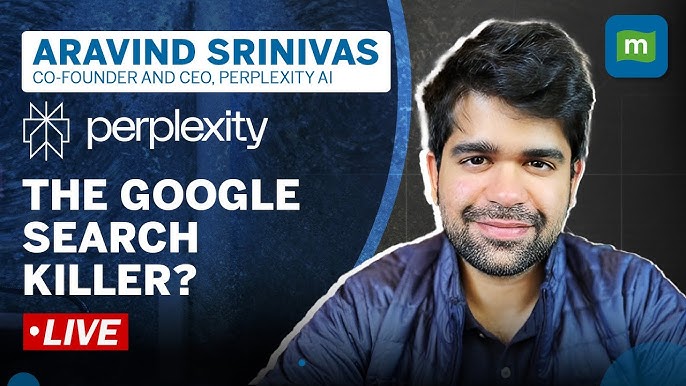Perplexity AI has rapidly emerged as a groundbreaking player in the AI-driven search and knowledge retrieval space, positioning itself as a formidable alternative to traditional search engines like Google and conversational AI platforms like ChatGPT. Founded in 2022, Perplexity distinguishes itself by combining large language models (LLMs) with real-time web data retrieval, delivering precise, citation-backed answers rather than generic responses. This hybrid approach addresses one of the biggest limitations of conventional AI chatbots—hallucinations—while offering a more efficient and research-friendly search experience. Over the past two years, the company has attracted significant investment, including backing from high-profile tech investors like Jeff Bezos, and has grown into a $500M+ enterprise. This analysis explores Perplexity’s origins, technological framework, competitive positioning, monetization strategies, and future trajectory in an increasingly crowded AI market.
Origins and Founding Vision
Perplexity AI was launched in August 2022 by a team of AI veterans with deep expertise in machine learning, search algorithms, and large-scale data systems. The founding team includes Aravind Srinivas (CEO), a former researcher at OpenAI and Google; Denis Yarats (CTO), an ex-Meta and Quora engineer specializing in AI; Andy Konwinski (CPO), co-founder of Databricks; and Johnny Ho, a former Google engineer. Their collective experience allowed them to identify a critical gap in the market: while LLMs like GPT-3 and GPT-4 excelled at generating human-like text, they often lacked real-time accuracy and verifiable sourcing.
The company’s mission was to create an AI-powered search engine that could retrieve, synthesize, and cite information dynamically, effectively acting as a “smart research assistant” rather than just a chatbot. Early development relied on fine-tuning OpenAI’s GPT-3, but Perplexity soon integrated its own retrieval-augmented generation (RAG) systems to improve factual correctness. The startup quickly gained traction, securing $2.7M in seed funding from prominent investors like Nat Friedman and Elad Gil, followed by a $25.6M Series A round in early 2023 led by NEA. By 2024, Perplexity’s valuation had surpassed $520 million, reflecting strong confidence in its potential to disrupt the search industry.
Technology and How Perplexity Works
At its core, Perplexity AI operates on a hybrid model that merges generative AI with real-time data retrieval, setting it apart from both traditional search engines and standalone chatbots. Unlike Google, which returns a list of links, or ChatGPT, which generates responses based on pre-trained data, Perplexity actively fetches and synthesizes live information from the web, ensuring up-to-date answers. The system leverages Retrieval-Augmented Generation (RAG), a technique that enhances LLMs by pulling in external knowledge, significantly reducing inaccuracies.
Perplexity’s architecture relies on multiple AI models, including GPT-4, Claude, and Mistral, fine-tuned for optimal performance in search and summarization. When a user submits a query, the platform:
-
Searches the web in real-time, indexing authoritative sources.
-
Extracts relevant passages and cross-references them for consistency.
-
Generates a concise, well-structured answer with inline citations.
-
Allows follow-up questions for deeper exploration, maintaining conversational flow.
This approach ensures that responses are not only accurate but also transparent, as users can verify sources directly. Additionally, Perplexity minimizes SEO-driven spam—a common issue with traditional search engines—by prioritizing quality content over ad-heavy or algorithmically boosted results.
Competitive Landscape and Growth Strategy
Perplexity operates in a highly competitive space dominated by tech giants like Google (Gemini), OpenAI (ChatGPT), and Anthropic (Claude). However, its unique value proposition—real-time, citation-backed AI search—gives it a distinct edge. Unlike ChatGPT, which lacks consistent sourcing, or Google, which remains ad-dependent, Perplexity offers a clean, research-optimized interface with minimal distractions.
Key Differentiators:
-
Accuracy & Transparency: Every answer includes clickable citations, appealing to professionals and academics.
-
No Ad Overload: Unlike Google, Perplexity avoids cluttering results with sponsored links.
-
Proactive Summarization: Instead of just listing links, it delivers instant, digestible insights.
Despite these advantages, Perplexity faces challenges in scaling its user base against entrenched competitors. Google’s Gemini AI and OpenAI’s web-browsing features are closing the gap in real-time retrieval. To stay ahead, Perplexity has focused on niche markets like researchers, developers, and business analysts, with plans to expand into enterprise solutions (e.g., custom AI agents for corporations).
Monetization currently revolves around a freemium model:
-
Free Tier: Access to basic search with limited AI model usage.
-
Pro Plan ($20/month): Unlocks GPT-4-level responses, unlimited queries, and file uploads.
-
Enterprise API: Targets businesses needing integrated AI search capabilities.
Future revenue streams may include non-intrusive ads, premium data partnerships, and B2B AI tools for sectors like legal and healthcare.
Future Prospects and Industry Impact
Looking ahead, Perplexity AI has the potential to reshape how people interact with information online. By 2030, AI-augmented search could replace 10-20% of traditional Google queries, particularly among power users who prioritize speed, accuracy, and citation integrity. The company’s roadmap likely includes:
1. Expansion into Multimodal AI
-
Integrating image, video, and audio analysis for richer answers.
-
Competing with Google Lens and OpenAI’s multimodal GPT-4.
2. Academic and Enterprise Adoption
-
Partnering with universities to become a default research tool.
-
Offering white-label solutions for corporate knowledge bases.
3. Voice and Personal AI Assistants
-
Developing voice-first search to rival Siri, Alexa, and Gemini’s voice features.
Challenges Ahead
-
Competition: Google and OpenAI are rapidly improving their RAG capabilities.
-
Monetization: Balancing free access with profitability remains tricky.
-
Trust & Misinformation: Maintaining citation accuracy at scale is critical.
Recent developments
Perplexity AI, has made an unsolicited $34.5 billion all-cash offer to buy Google’s Chrome web browser. The move comes amid a U.S. antitrust case against Google, where a federal judge has ruled the company holds an illegal monopoly and the Department of Justice has proposed forcing a sale of Chrome as a remedy. Perplexity’s bid, which is more than double its own valuation, aims to acquire Chrome’s over three billion users and position the startup as a major player in the AI search market. Perplexity has stated that it has secured financing from unnamed investment funds and has pledged to keep Chrome’s underlying Chromium code open-source, invest $3 billion in its development, and not change the default search engine. While Google has not indicated any intention to sell and is appealing the antitrust ruling, the offer is widely seen as a strategic play by Perplexity to gain publicity and influence the ongoing legal proceedings.
Perplexity AI represents a new paradigm in search, blending the best of generative AI and real-time data retrieval. While it may not replace Google entirely, it has carved out a high-value niche among users who demand precision, transparency, and efficiency. If the company continues to innovate—particularly in enterprise AI and multimodal search—it could become a fundamental tool in the future of information discovery. The next five years will be decisive in determining whether Perplexity evolves into a mainstay of AI-powered search or remains a premium alternative for researchers and professionals.




